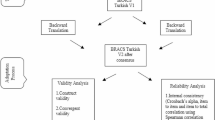Abstract
Speech–language pathologists (SLPs) in medical settings are responsible for evaluating patients’ feeding and swallowing. Once an evaluation is completed, nursing staff typically provides hands-on care and supervision of meals. SLPs seek to improve outcomes for individuals with dysphagia by educating direct-care staff. This project sought to determine whether a computer-based swallowing safety module could produce changes in knowledge levels of nursing staff. This module was designed to replace inservices conducted by staff SLPs. Nursing staff would be required to complete the training when hired and as an annual assessment. The training module was designed and pilot-tested along with a pre- and posttest to assess changes in knowledge. Participants in the experimental group took the pretest, completed the computer training module, and then took the posttest. Participants in the control group took the pre- and posttest with no intervening training. Statistically significant differences were found between the two groups on posttest scores. Participants in the experimental group demonstrated increased test scores, while the scores of the control group did not change significantly. This study indicates that computer-based training for nursing staff related to swallowing safety and dysphagia is effective.




Similar content being viewed by others
References
American Speech–Language–Hearing Association: Scope of practice in speech–language pathology. Rockville, MD: ASHA, 2001
InstitutionalAuthorNameAmerican Speech–Language–Hearing Association (2002) ArticleTitleKnowledge and skills needed by speech–language pathologists providing services to individuals with swallowing and/or feeding disorders ASHA 22 IssueIDSuppl 81–88
D Wright (1998) The ultimate guide to competency assessment in healthcare EditionNumber2 MN Creative Healthcare Management Minneapolis
S Schell DS Lind (2003) ArticleTitleAn internet-based tool for evaluating third-year medical student performance Am J Surg 185 211–215 Occurrence Handle10.1016/S0002-9610(02)01359-4 Occurrence Handle12620557
R Welton F Nieves–Khouw D Schreiber MP McElreath (2000) ArticleTitleDeveloping computer-based training for age-related competencies J Nurse Staff Dev 16 195–201 Occurrence Handle10.1097/00124645-200009000-00001
RA Wolford LK Hughes (2001) ArticleTitleUsing the hospital intranet to meet competency standards for nurses J Nurse Staff Dev 17 182–189
D Bueno Particledel F Barker C Christmyer (1980) ArticleTitleImplementing a competency-based orientation program Nurse Educ 5 IssueID3 16–20 Occurrence Handle6900200
Acknowledgments
The authors thank Bryan Booth in the Information Technology Department at St. John Medical Center, Tulsa, OK, for his help programming the computer-based training module. They also express appreciation to the nursing staff at St. John Medical Center who participated in this investigation.
Author information
Authors and Affiliations
Corresponding author
Rights and permissions
About this article
Cite this article
Davis, L., Copeland, K. Effectiveness of Computer-Based Dysphagia Training for Direct Patient Care Staff. Dysphagia 20, 141–148 (2005). https://doi.org/10.1007/s00455-005-0007-z
Issue Date:
DOI: https://doi.org/10.1007/s00455-005-0007-z




